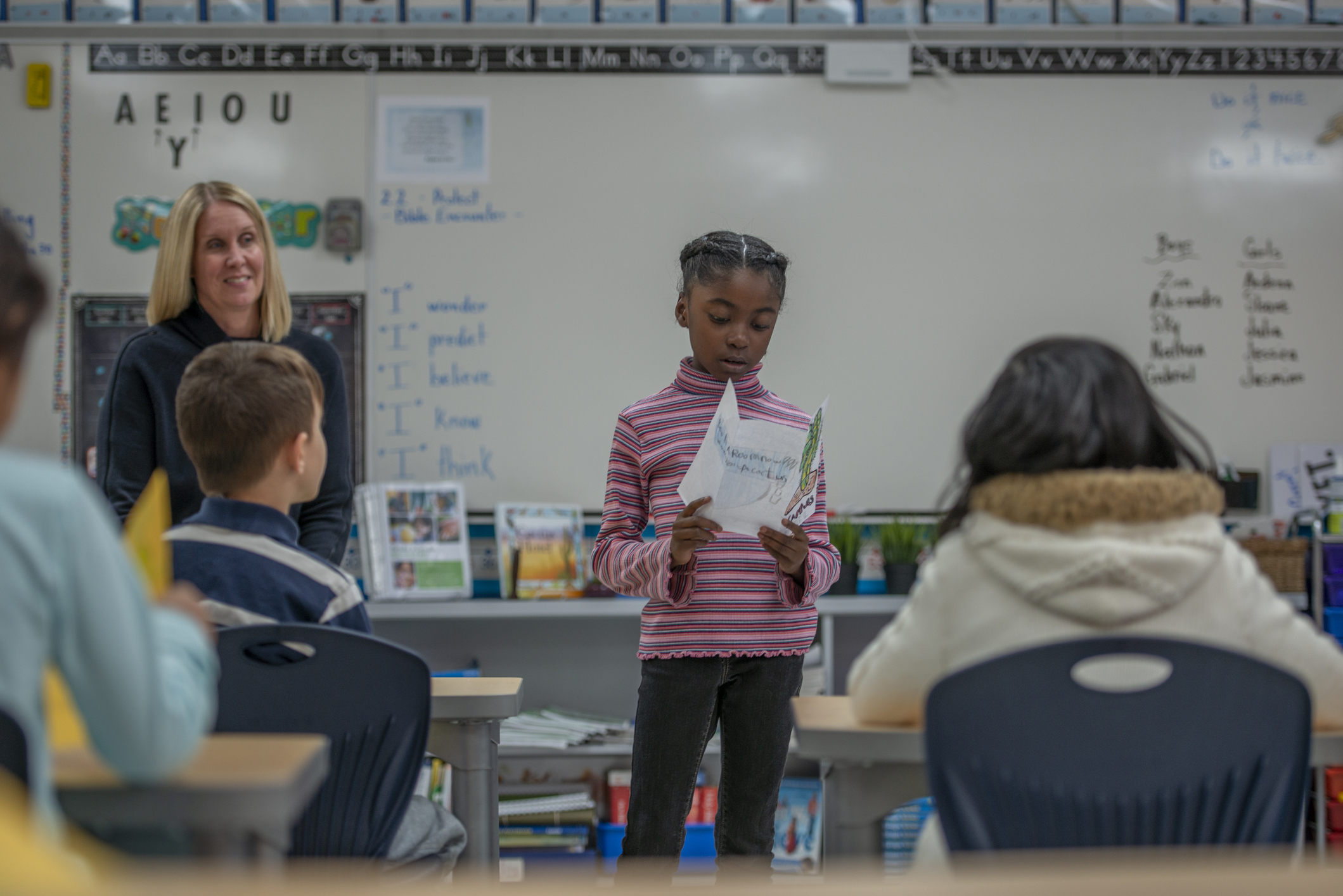
“Literacy development has always been connected to identity, skills, intellect, criticality, and joy. When we reduce it to only skills, we deny students their full humanity.” — Gholdy Muhammad, Cultivating Genius: An Equity Framework for Culturally and Historically Responsive Literacy
Every year on September 8, International Literacy Day reminds us of the power of literacy, not just as reading and writing skills, but as pathways to opportunity, equity, and joy. Literacy is more than decoding text or completing writing assignments. It’s about making meaning, expressing ideas, and engaging with the world in ways that matter. Literacy extends across content areas and media. It encompasses the ability to think critically, analyze information, and recognize the power of different perspectives.
In today’s world, literacy also means navigating digital tools and using knowledge to achieve personal goals and contribute to society.
Literacy With Purpose
Classrooms that rely on traditional approaches to instruction often ask students to read or write in isolation, with their work viewed only by the teacher. In contrast, Project Based Learning offers authentic opportunities to use literacy for inquiry, communication, and connection across the curriculum. Through these experiences, students not only strengthen comprehension and writing but also build the skills to inquire, connect, and communicate in meaningful ways.
The design elements of Gold Standard PBL bring this to life in several ways, some examples below:
Authenticity: Students research real-world issues and explore primary and secondary sources to develop evidence-based perspectives, seeing literacy as a tool for inquiry and social connection.
Public Product: They write persuasive op-eds, podcast scripts, or children’s books for authentic audiences—demonstrating that literacy has purpose and influence beyond the classroom.
Reflection & Peer Critique: By engaging in reading, writing, speaking, and listening—and revising their work based on feedback—students experience literacy as a continuous process that builds clarity, voice, and confidence.
Student Voice & Choice: Selecting topics that matter and choosing how to express their ideas, students discover their voices have power. Literacy becomes not just a skill, but a means of identity, expression, and change.
What the Research Shows
Research has consistently shown a strong connection between PBL and literacy growth. For example:
New Research Makes a Powerful Case for PBL: Students showed significant gains in reading, writing, and comprehension, especially in schools serving historically underserved communities.
Deeper Learning for All: State PBL Ecosystems Report: PBL strengthens deeper learning outcomes—critical thinking, collaboration, and communication—all rooted in literacy.
PBL Develops Essential Digital Literacy Skills in the Post-COVID Landscape: Explore how Gold Standard Project Based Learning equips students with the digital literacy, critical thinking, and real-world skills needed for a rapidly evolving future.
Teacher & Student Stories
Teachers often tell us that PBL transforms how their students approach reading and writing. In Adair County, Kentucky, Spanish teacher Kimberly O’Brien designed Libros para Littles, where high schoolers authored picture books in Spanish for younger students across the district. Even reluctant writers grew excited knowing their stories would be shared and celebrated.
In another project, third graders in Michigan explored economic growth through inclusive picture books that elevated marginalized voices. By analyzing how diverse groups resisted injustices, students identified traits of change agents and then presented how those same qualities could inspire action today. Whether through storytelling, historical inquiry, or critical reading, these projects show how literacy in PBL becomes meaningful, authentic, and connected to the community.
Resources to Explore
Here are a few ways to dive deeper into literacy through PBL:
PBLWorks TEACH™ App– Ready-to-use project-based curriculum units that embed literacy tasks across subjects.
Project Library– Our Project Library features over 100 projects, each one intentionally designed with literacy standards embedded throughout.
From Our Blog–
- PBL and Literacy: A Perfect Match for Elementary Schools
- PBL and Early Learners: Curating a Literacy-Rich Environment
- PBL & Literacy: Teaching Reading While on a Learning Journey
- 3 Tips for Literacy in Project Based Learning: Challenges and Opportunities
- Project Based Writing: A Useful Tool at Every Stage
- Embed Literacy into STEM Projects
- PBL and Inclusive Literacy: The Freedom of Student Voice
PBLWorks Workshops – Professional learning that helps teachers scaffold literacy into high-quality projects. Explore our upcoming Open Online workshops.
Research & Publications – Explore the evidence behind PBL’s impact on literacy and deeper learning.
Why It Matters
Literacy is a gateway to equity. It opens doors to future opportunities and ensures every student can fully participate in civic life. When we make literacy authentic through Project Based Learning, we’re not just teaching students to read and write—we’re empowering them to find their voice, share their stories, and change their world. This Literacy Day, let’s celebrate the power of PBL to make literacy come alive for every student.

